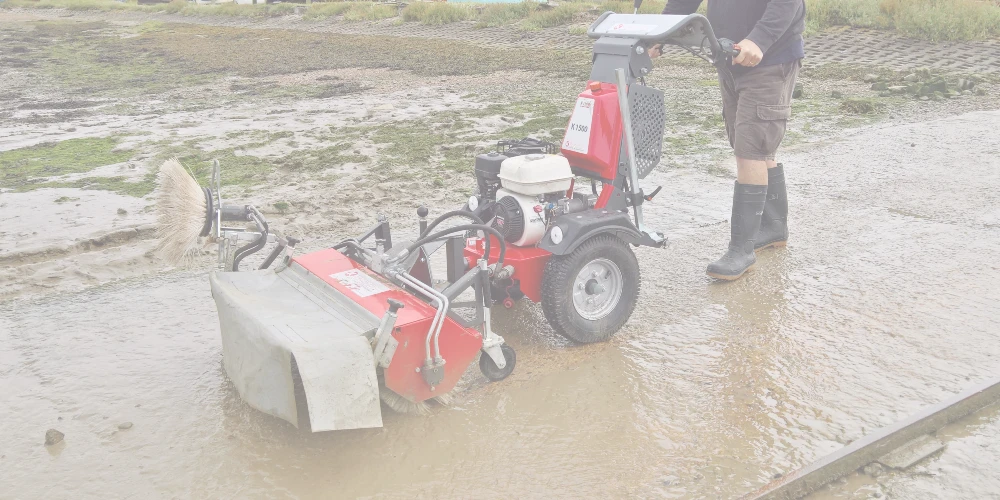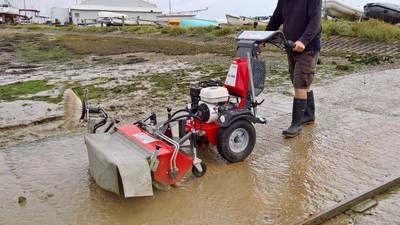Mud and Slurry Management

Mud and Slurry Management
Mud and slurry can quickly accumulate on hard surfaces, especially after rainfall, as loose soil and debris become wet. This mud is often spread by vehicles, pedestrians, or water runoff, creating slippery and hazardous conditions on paths, pavements, and slipways. Proactive measures, such as installing brush stations to minimize detritus turning into mud, are crucial for effective mud management. Regular sweeping and collecting mud from surfaces where it doesn't belong can prevent buildup. For stubborn mud, a scraping bar can be fitted to the front of a sweeper to loosen it before sweeping, ensuring thorough cleaning and safer surfaces.
Effective Mud and Slurry Management for Hard Surfaces
For daily mud management, powered sweepers equipped with a collector box are ideal for regularly removing loose mud from hard surfaces like tarmac and block paving. A scraping bar can be fitted to the front of the sweeper to loosen stubborn mud before it’s swept away. This is especially helpful in high-traffic areas where mud tends to accumulate and harden.
For particularly stubborn mud, consider using a weed brush. These powerful brushes are designed to break down compacted mud and debris efficiently. Adjusting the brush speed and using the angling will help target mud without damaging the surface beneath. For optimal results, sweeping while the surface is damp allows the mud to be collected more effectively, minimizing dust and reducing mess.
In areas like slipways, pontoons, and quays, where mud and algae can be a challenge, regular sweeping is highly effective. A powered sweeper can efficiently clean these surfaces, especially when the algae or mud is still damp. Always sweep along the natural grain or pattern of the material to prevent damage, especially on wooden decking.
High-pressure washing is another alternative, but it can be time-consuming and requires significant water resources. For an environmentally friendly approach, regular sweeping with a powered sweeper remains one of the most effective methods.
Articles about Mud and Slurry Management
Mud accumulates when loose soil, debris, or dust becomes wet, often due to rainfall or runoff from other surfaces. This process can be accelerated by vehicle and pedestrian traffic, which spreads the mud and makes it harder to manage. Regular maintenance is essential to prevent the buildup of mud and ensure safe pathways.
Sweeping while the surface is damp helps to bind the mud, making it easier to collect and minimizing dust. This method reduces mess and increases efficiency, ensuring that more mud is captured rather than spread around, which is especially important in high-traffic areas.
For stubborn mud, a scraping bar can be attached to the front of your sweeper to loosen the mud before sweeping. Additionally, a weed brush is effective for breaking down compacted mud and debris. Adjusting the brush speed and using the sweeper’s angling feature can target mud without damaging the surface underneath.


